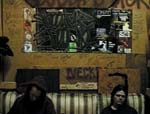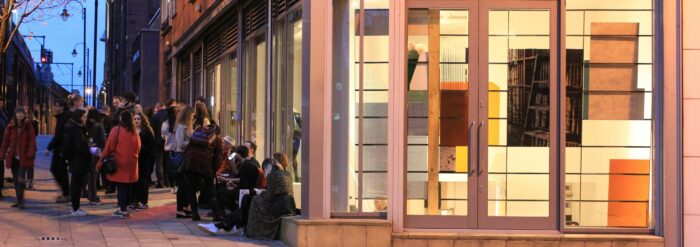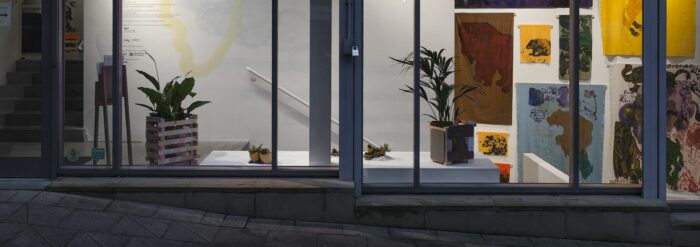
PureScreen #11: I’ll Rather Jack
PureScreen #11: I’ll Rather Jack
15 July 2005
18:00 - 23:00
To coincide with the exhibition ‘Pass the Time of Day’ PureScreen & Castlefield Gallery host a night of artist’s film and video screenings about music and the everyday at The King’s Arms, Salford. Featuring artists: George Barber, Mark Aerial Waller, Ann Course & Paul Clark, Bjørn Melhus, Cerith Wyn Evans, Matthew Noel-Tod, Pascal Lievre, George Shaw, Katy Dove, Peter Donaldson, and Fugazi & Jem Cohen. PROGRAMME ORDER: I’d Rather Jack – S1 / salon S1 / salon is a season of artist film and video programmes hosted in the project space at S1 Artspace, Sheffield. The programme I’d Rather Jack brings together artist films and videos about music and was originally developed by Michelle Cotton and Matthew Noel-Tod and presented in Sheffield in February 2004. The programme, introduced by Michelle Cotton, will run for an hour and includes works by the following artists: George Barber, Mark Aerial Waller, Ann Course & Paul Clark, Bjørn Melhus, Cerith Wyn Evans, Matthew Noel-Tod, Pascal Lievre, George Shaw, Katy Dove, and Peter Donaldson. Instrument – Fugazi & Jem Cohen A one-off screening of the film ‘Instrument’ by Fugazi and Jem Cohen, which documents the band Fugazi on tour. Rather than attempting to capture the glamour of the ‘rock tour’, the film focuses on the in-between times, the boring, mundane moments of eating at service stations and trying to sleep on the tour bus. "Jem Cohen shares the credit for his 1999 film ‘Instrument’ with Fugazi, the post-punk band that is its subject. Cohen and Fugazi singer Ian MacKaye were at high school together, and the film is put together from footage collected over ten years, giving it a notable depth. Rather than relying on concert footage, the film is really a documentary about the life of the band, the frequent banalities of such an existence, and the poetry of incidental detail. In one remarkable sequence the camera cuts between individual fans waiting in line for a gig. The youngsters are isolated in the black and white frame and smile nervously at the camera, which lingers long enough to make the subjects uncomfortably self-conscious. The effect is somewhere between Andy Warhol’s screen tests and Harmony Korine’s people-worrying camerawork, and is a deliberate rejection of the relentless jump-cuts of most MTV-inspired music footage, reflecting the fiercely non-commercial ethos of the band. In short, it’s a model arthouse music documentary…" – quote from Art Monthly, March 2005 © David Barrett.

